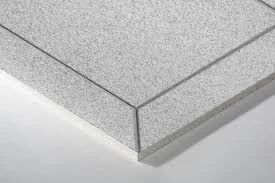Dec . 04, 2024 14:19 Back to list
Ceiling Access Panel Specifications and Compliance Guidelines for Installation and Maintenance
Ceiling Access Panel Requirements Essential Considerations for Construction
When it comes to construction and building design, attention to detail is paramount in ensuring a functional and efficient space. One often-overlooked element is the ceiling access panel. These panels provide critical access to hidden systems within ceilings, such as electrical wiring, plumbing, and HVAC ductwork. Understanding the requirements for ceiling access panels is essential for contractors, architects, and property owners alike.
What is a Ceiling Access Panel?
A ceiling access panel is a removable panel that allows for easy access to the areas above a ceiling. These panels are commonly used in commercial and residential buildings to facilitate maintenance and repairs without the need for invasive measures. They help to ensure that technicians can reach necessary components quickly and efficiently, thus minimizing downtime and potential disruptions.
Key Requirements for Ceiling Access Panels
1. Material Standards The materials used for access panels must comply with industry standards for fire safety, durability, and load capacity. Depending on the location and intended use, materials such as galvanized steel, aluminum, and PVC might be appropriate. For instance, in areas where fire resistance is crucial, panels may need to be constructed of non-combustible materials.
2. Size and Accessibility The size of the access panel is determined by the components or systems needing access. It is essential to ensure that the dimensions not only allow for easy reach but also comply with local building codes. Most codes specify minimum sizes for access panels to ensure that maintenance personnel can work without hindrance. Standard sizes typically range from 12x12 inches to larger panels for bigger systems.
ceiling access panel requirements

3. Location and Placement The placement of ceiling access panels should be strategically planned to ensure maximum accessibility. They should not be placed in areas where they could obstruct lights or other fixtures. Additionally, consideration should be given to the height of the ceilings and whether specialized equipment, such as ladders, will be needed to access the panels safely.
4. Aesthetic Considerations While functionality is crucial, so is the appearance of the access panels. Many modern access panels are designed to blend seamlessly with their surroundings. This can include finished edges, paintable surfaces, or designs that match ceiling tiles. Choosing panels that enhance rather than detract from the aesthetic of the room is essential.
5. Security Features Depending on the building’s purpose, security can be a concern. Panels that provide access to sensitive areas may require locking mechanisms to prevent unauthorized access. It's vital to assess the need for security features based on the specific environment in which the panel is installed.
6. Compliance with Building Codes All access panels must adhere to local building codes and regulations. These codes ensure the safety and accessibility of the installations. Before installation, it is important to consult with local jurisdiction regulations to confirm compliance.
7. Installation Guidelines Proper installation is critical for the effective functioning of ceiling access panels. Installation should be done by experienced professionals who can ensure that structural and safety requirements are met. This includes ensuring that the panel is appropriately aligned, securely fastened, and adequately insulated if necessary to prevent energy loss.
Conclusion
Ceiling access panels might seem like a small detail in construction, but they play a vital role in the maintenance and functionality of buildings. By understanding and adhering to the requirements for these panels, builders and property owners can ensure that they provide both practical access and fit seamlessly into the overall design of the space. Prioritizing material standards, accessibility, aesthetic considerations, and compliance with building codes will lead to successful projects that serve their intended purpose efficiently. As buildings evolve, the importance of effective maintenance solutions, such as ceiling access panels, will continue to grow, making them an essential component of modern construction practices.
-
Durable Ceiling T Grid Systems | Easy InstallationNewsAug.29,2025
-
PVC Gypsum Ceiling: Durable, Laminated Tiles for Modern SpacesNewsAug.28,2025
-
Pvc Gypsum Ceiling Is DurableNewsAug.21,2025
-
Mineral Fiber Board Is DurableNewsAug.21,2025
-
Ceiling Tile Clip Reusable DesignNewsAug.21,2025
-
Ceiling T Grid Modular DesignNewsAug.21,2025







